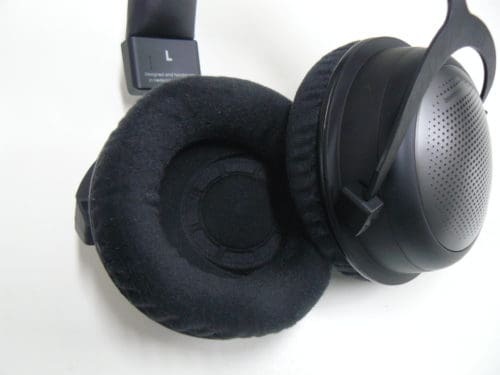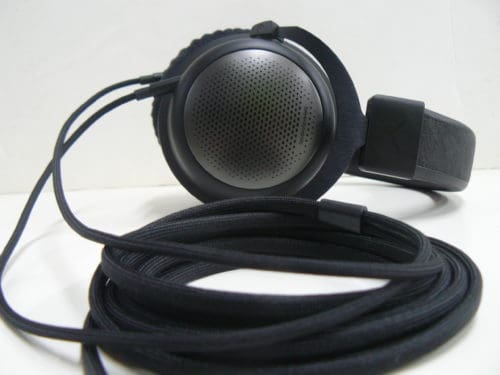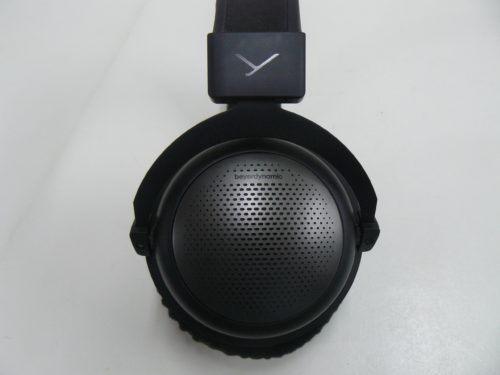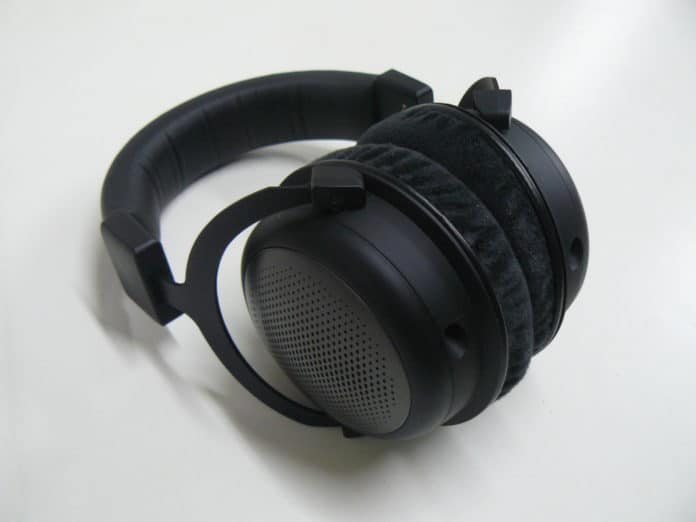I must confess that I have a pretty high standard when it comes to Beyerdynamic. I rank many of their models highly, such as the DT 770, or the 990. I was excited when I received the brand new third-generation T1, as I get excited for any Beyerdynamic product to reach my desk, but I was specifically looking forward to how they work to evolve the Tesla technology introduced in this line. The 2nd generation was mostly well-received, but one could say accessibility was an issue, as they were almost impossible to drive without an amplifier. With the bonus of being priced $100 less than the previous generation, they also have a wildly minimal resistance comparatively. While some consumers might be happy about this, others might say it’ll sacrifice some fidelity. So, let’s see what’s true about the third generation Beyerdynamic T1.

What You Get
First things first, let’s see what important items the T1 comes packed with. As it turns out, not so much in fact. You get the T1 itself that comes in a protective hard case that also contains the 3m detachable cable. The only other accessory you’ll get is a quarter-inch adapter, pretty simple. Though the T1 features a lower impedance than its predecessor, I think it would be safe to assume that this headphone is mostly for at-home listening, since Beyerdynamic doesn’t exactly include many packing options.

Look and Feel
If you’re familiar with Beyerdynamic and its standard headphone design, the T1 won’t surprise you. This time around, the T1 has ditched its silvery finish for a black one, and it appears rather sleek. The circular ear cups bulge out showing off the open-back grills that integrate seamlessly in the overall aesthetic of the headphone. The pads themselves, which are replaceable, are made from velour and contain multi-layered fillings. This material can actually feel a little rough at first, but after a few seconds, they prove to be very cushiony. This is helped by the headband, which is made from a more leathery material that gently presses against the top of your head. The best part about this fit is that my ears just felt like they could breathe. No sweaty ear fatigue or pressure was felt beside the initial adjustment they had to take.

Design
The T1 and all of its components are handmade giving these cans a well-crafted, natural quality. Added to this natural character is the full open-back design, made using a sophisticated etching process, which invites sounds into your space. I’m a big fan of open-back headphones and Beyerdynamic uses this design in conjunction with its own tech to produce high-quality sound reproduction. The Telsa driver is back for the third generation and this time they’ve tilted the drivers in order to preserve more spatial qualities to improve the soundstage. The dual detachable cable is notable as well. Made from ultra-high purity OCC7N copper, and shielded in a nice fabric. The jack, as well as the headphone inputs, are all 3.5mm connectors.

Output
I’ve seen some controversy over the low resistance signal output the new T1 produces compared to the second generation. The new T1 brings impedance all the way down from the 600 Ohms of the last model, to just 32 Ohms. This makes the T1 a lot easier to drive into a smart device or computer, with a clean signal being produced without cranking much gain. The frequency response is very wide, coming in at 5Hz-50kHz, leaving a lot more room for detail reproduction.

Soundstage
The main focus of open-back headphones is to expand the outer reaches of the physical device itself and create a natural soundscape in a stereo field. The T1 is an odd open-back. While the soundstage is definitely wide, it wasn’t the sound I was expecting. This might have something to do with the warmer nature of this sound signature, as the high-end response is limited, and lacks that top ending definition that helps the spaciousness of some tracks. However, this is still an excellent stage and one that excels in bringing comfort for the spatial elements to sit in. Space takes on a more roomy tone, as instruments can be perceived in the space they occupy. This is perfect for Jazz performances, as the present space invites you into a welcoming environment. This is why I enjoy listening to demos when they become available, like the super deluxe edition of Abbey Road, which has this charming demo of Octopus’s Garden where Ringo and George Martin speak to each other on talkback for a bit before they begin. It sounds strangely immersive like you’re sitting with them in the studio.
Low End
Having a booming low end isn’t exactly a quality of many open-back headphones, which is why the T1s really surprised me in this area. These headphones have a deep resonance that spreads its wings in the mix. The textures are smooth and add a subtle glow to tracks with dark drones, or sustaining bass strings. Bass elements come out clear and have a distinct separation that lets you really break down the section. Johann Johannsson’s score for “Mandy” has some considerably large bass synths, and the T1 captures just how angry and threatening it can be by pushing the stage and letting the frequencies explore the real width of the sound. The T1 does a great job producing the ideal bass for an open-back.
Mids
The many warm and cozy low-mid textures do a great deal to make this a unique open-back. The T1 offers a full mid-range spectrum, but the low-mids are definitely colored and boosted, which I thought added a passionate tonality to many contemporary tracks. A soulful ballad turns an impressive timbre for the T1 like a greater weight is being dropped on you. This sound was perfect for albums like Cory Wong’s “Dusk” and “Dawn,” as the beautiful acoustic performances waft through your headspace and crafts the intended soundscapes the LP is going for. Instrumental performances hold gravitas, as well as powerful vocals. Fiona Apple’s voice on a majority of her releases sound intimate and focused, you’d be hard-pressed to stop paying attention.
Highs
Not a whole lot to mention here, certain elements have some sizzle, but a lot of this range is limiting. However, they never feel out of place, or lacking any fidelity. It more feels like they just weren’t important in creating the signature the T1 is going for, so they were properly balanced to create a warm, darker headphone. If you really pay attention you can just grasp them, but they won’t jump out at you in any significant way.
Summary
I enjoyed my time listening to the new T1, but I don’t feel like it’s a significant upgrade compared to the previous generation. It’s more like a second option, it’s the T1 but more open, and a warmer timbre. If that sounds good to you then I couldn’t recommend the T1 enough. If you already own the second generation and see the latest model, you may want to hold onto your current generation. The technology of this line is still evolving, and while the third generation T1 feels and sounds great, it might not be the upgraded model you’re looking for. Just a different one.
Pros and Cons
Pros: Warm timbre, excellent open-back soundstage, great fit
Cons: Amp owners may be disappointed
Beyerdynamic T1 3rd generation is available from Audio 46
MAJORHIFI may get a commission from retail offers.
See how where these headphones place in our ranking tool.
Compare the ranking of various headphones, earbuds and in-ear monitors using our tools.
Discuss this, and much more, over on our forum.
---MAJORHIFI may receive commissions from retail offers.















